Flat roofs are a staple in commercial, institutional, and industrial construction—and for good reason. From schools and churches to warehouses and office buildings, flat roofing systems offer unique advantages in both function and design. But with those advantages come specific challenges and considerations.
Whether you’re dealing with storm-related damage or planning a long-overdue upgrade to your current roof, it’s important to understand the different flat roof materials available and how to care for them. Choosing the right system and the right contractor can dramatically improve your building’s energy efficiency, prevent leaks, and extend the life of your roof.
In this article, we’ll explore why flat roofs are such a popular choice in commercial construction, examining the most commonly used flat roof materials and the pros and cons of each. We’ll also highlight common issues that can affect the performance and longevity of flat roofs, along with practical tips for proper maintenance.
Why Flat Roofs Are Common in Commercial and Industrial Buildings
Flat roofs are often the go-to choice for schools, churches, banks, retail stores, and manufacturing plants. Their practical benefits make them ideal for large, low-slope buildings and campuses.
Benefits of Flat Roofs:
- Easier to inspect and maintain: Flat surfaces make inspections, maintenance, and repairs safer and more accessible.
- Lower installation costs: Flat roofs generally require fewer materials and less structural support, making them cost-effective to install.
- Energy efficiency potential: Many flat roof systems reflect sunlight or allow for added insulation, reducing heating and cooling costs.
- Clean, minimal visual profile: Flat roofs offer a modern, streamlined appearance that fits well with most commercial architecture.
That said, not all flat roofs are created equal. It’s essential to understand the material that’s on your building—and how to maintain it for long-term performance.

Flat Roof Materials
There are several flat roofing systems available today, each with different strengths and ideal applications. At Next Phase Roofing, we walk our clients through the pros and cons of each to determine the best fit for their facility.
TPO (Thermoplastic Polyolefin)
TPO is a single-ply membrane that offers excellent waterproofing, heat reflection, and energy efficiency. It’s lightweight, cost-effective, and offers versatile insulation options. We proudly use GAF TPO products and are trusted experts in TPO installation. With its long lifespan and reliable performance, TPO is one of the most popular flat roofing systems on the market today.
PVC (Polyvinyl Chloride)
PVC roofing is another single-ply membrane option known for its strength, chemical resistance, and fire resistance. It holds up well under heavy pressure and is a smart choice for restaurants, retail buildings, and other commercial facilities where durability matters. Like TPO, PVC reflects UV rays and contributes to energy savings.
EPDM (Ethylene Propylene Diene Monomer)
This synthetic rubber membrane is valued for its durability and resistance to extreme temperatures, UV radiation, and hail. EPDM can be adhered, mechanically fastened, or ballasted, depending on your building’s needs. It’s a lightweight, long-lasting material that performs well in Oklahoma’s varied climate.
SPF / Liquid-Applied Systems
Spray polyurethane foam (SPF) is applied directly to the existing roof and expands to form a seamless, watertight barrier. With the highest R-value per inch of any roofing material, it delivers unmatched insulation and energy efficiency. It’s especially valuable for complex roof shapes or buildings with difficult access points.
Modified Bitumen
A time-tested material reinforced with rubber or plastic polymers and fiberglass, modified bitumen offers excellent tear resistance and weatherproofing. Its layered construction adds durability, making it suitable for high-traffic areas on rooftops. It’s flexible, waterproof, and performs well in harsh weather.
Tar & Gravel (Built-Up Roofing – BUR)
While still found on many older buildings, BUR is largely outdated compared to today’s more advanced systems. At Next Phase, we don’t install BUR, but we offer professional removal services and can guide you toward a better-performing flat roofing system for your property.
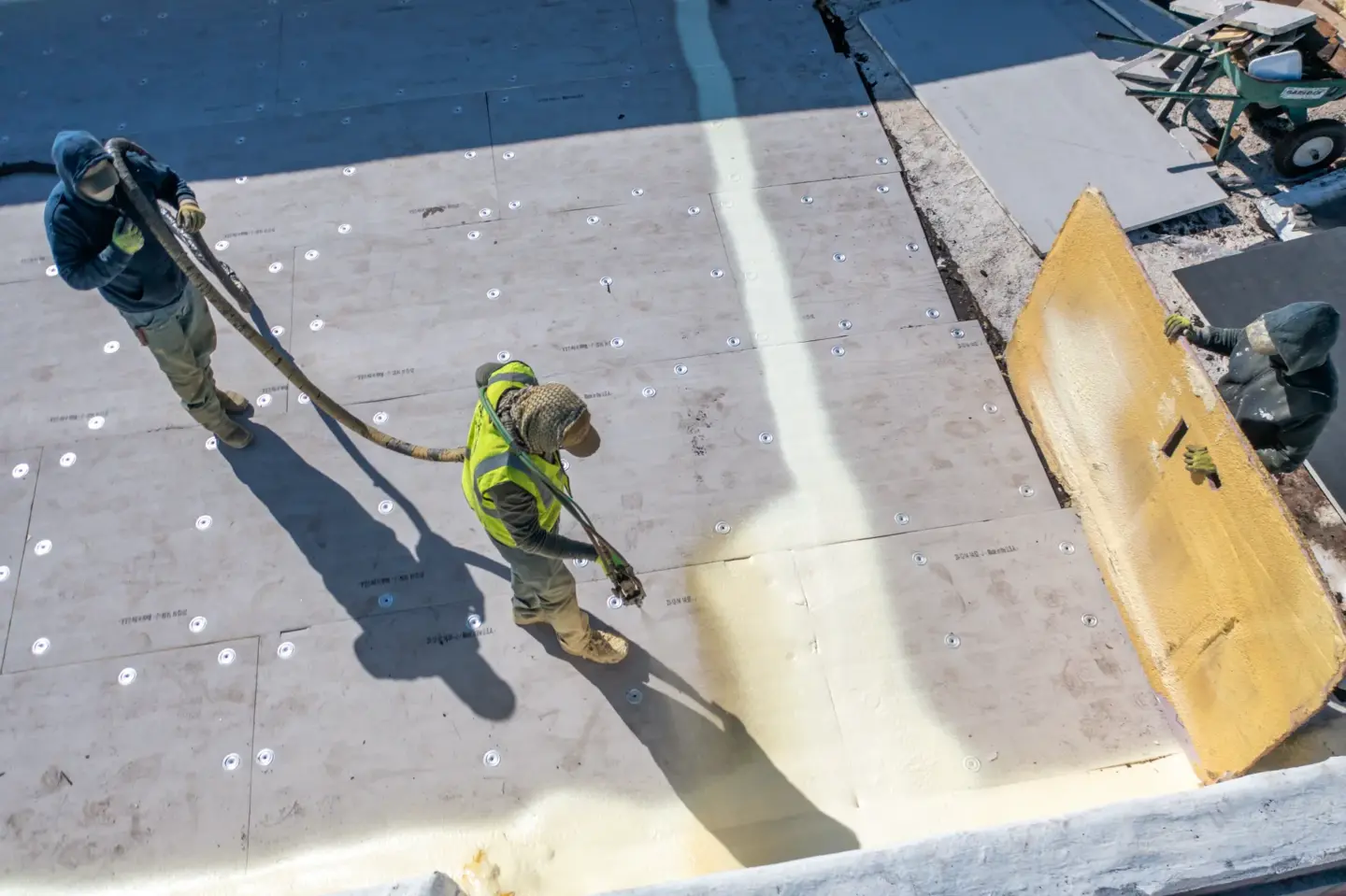
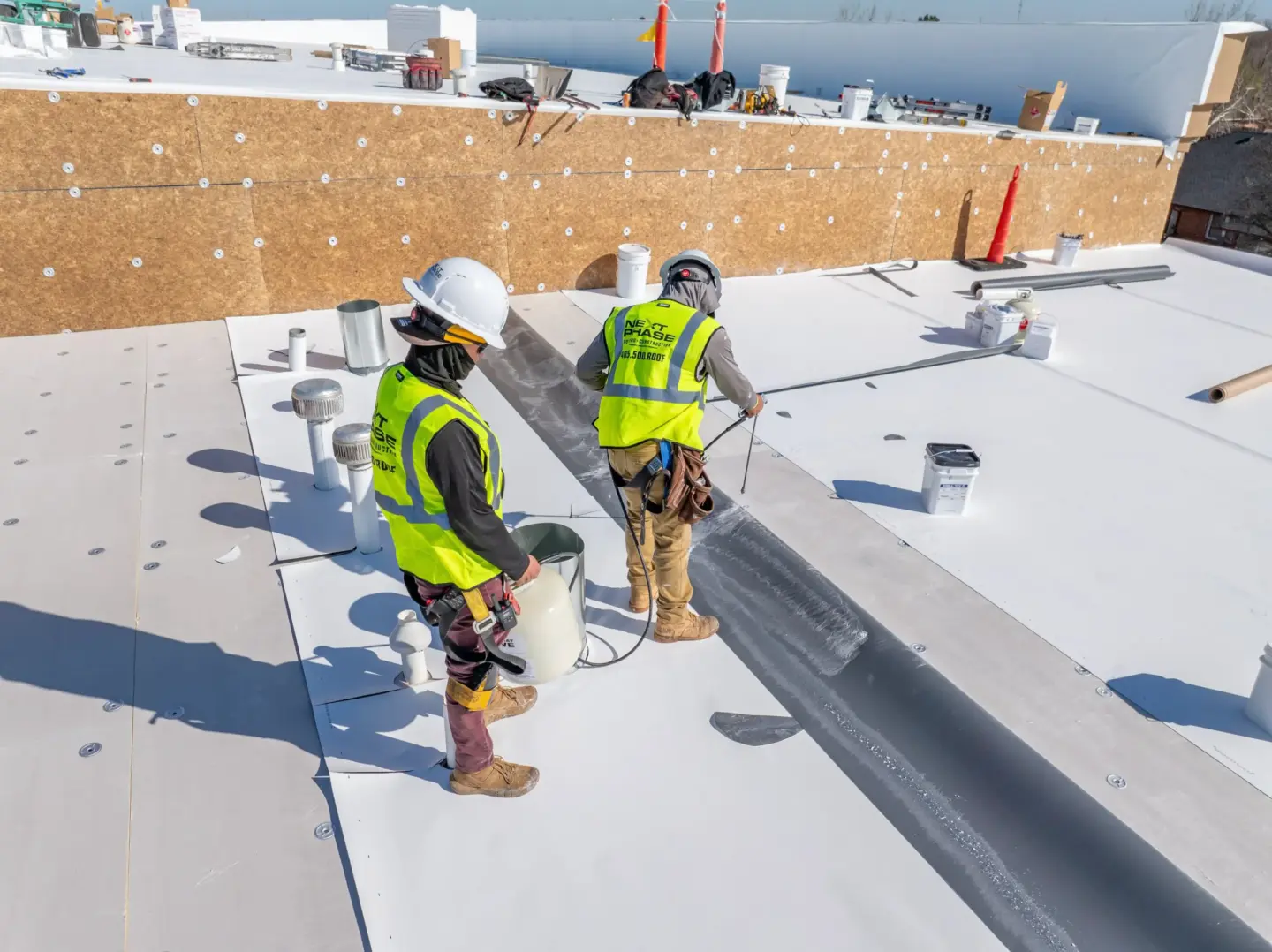
Common Issues with Flat Roofs
Flat roofs may be easier to inspect, but they’re also more vulnerable to certain problems if not properly maintained. Here are some of the most common issues building owners should watch for:
- Ponding Water: Flat roofs must be designed with proper slope and drainage. Standing water can lead to leaks, rot, and structural damage.
- Membrane Punctures or Tears: Foot traffic, falling debris, or equipment can puncture the roof, compromising its waterproofing.
- UV Damage and Aging: Over time, sunlight degrades roofing materials—especially if the system isn’t reflective or maintained.
- Seam Failures and Flashing Issues: Improper installation or aging can lead to failed seams and gaps where water can enter.
- Poor Drainage: Clogged drains, scuppers, or gutters can back up water and increase risk of leaks.
- Storm and Foot Traffic Damage: HVAC repairs, wind-blown debris, and hail can all wear down your flat roof over time.

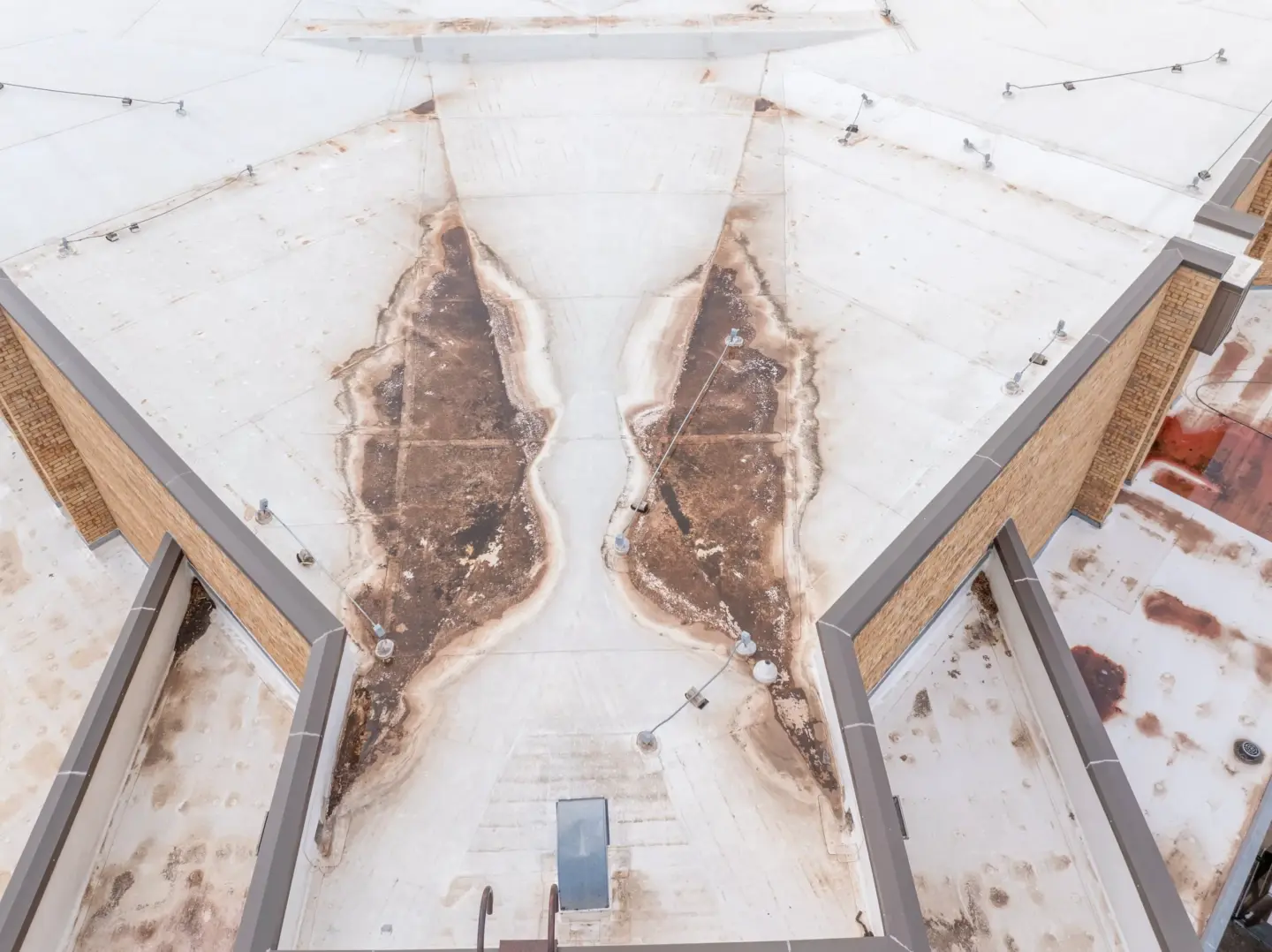
Flat Roof Maintenance
Proactive maintenance is essential to maximize the life of a flat roof. Regular inspections—ideally twice a year and after major storms—help catch small issues before they become costly repairs. Keeping drains, scuppers, and gutters clear prevents ponding water and water infiltration. Documenting visible changes, such as bubbles or soft spots, can help with long-term monitoring and insurance claims. Minimizing rooftop foot traffic, except when necessary, can extend the life of the membrane. Partnering with a roofing professional for periodic assessments is one of the best ways to protect your investment.
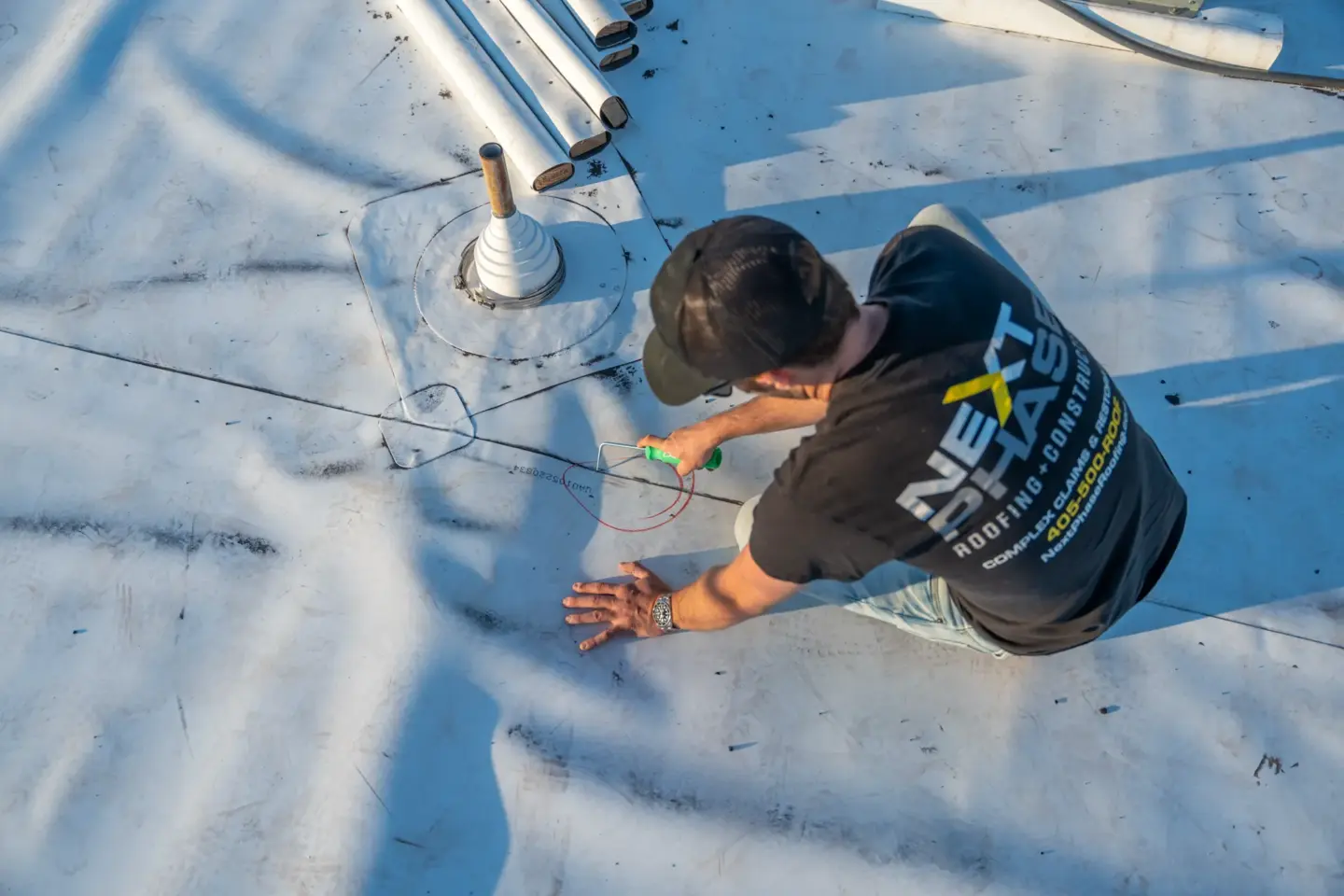

Why Choose Next Phase?
Flat roofing requires specialized knowledge, and the team at Next Phase Roofing brings extensive experience across a variety of flat roof systems. We’ve worked with facilities of all sizes—from large school campuses and churches to local retail centers and industrial buildings—and we understand how to minimize disruptions during inspections, maintenance, or full roof replacements. Our detailed evaluations look beyond surface issues to identify hidden damage and long-term risks. We provide straightforward recommendations based on your building’s unique needs and goals.
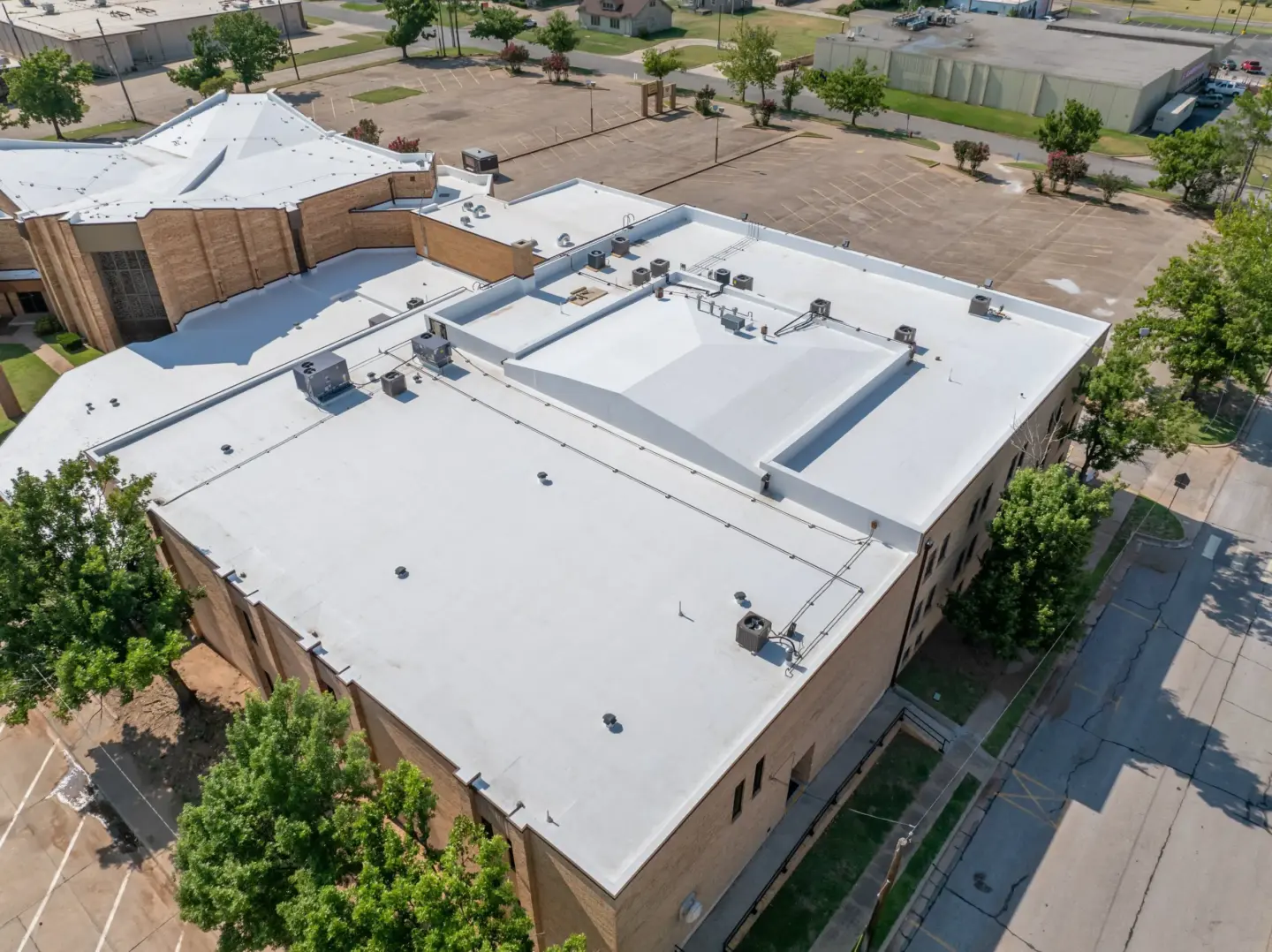
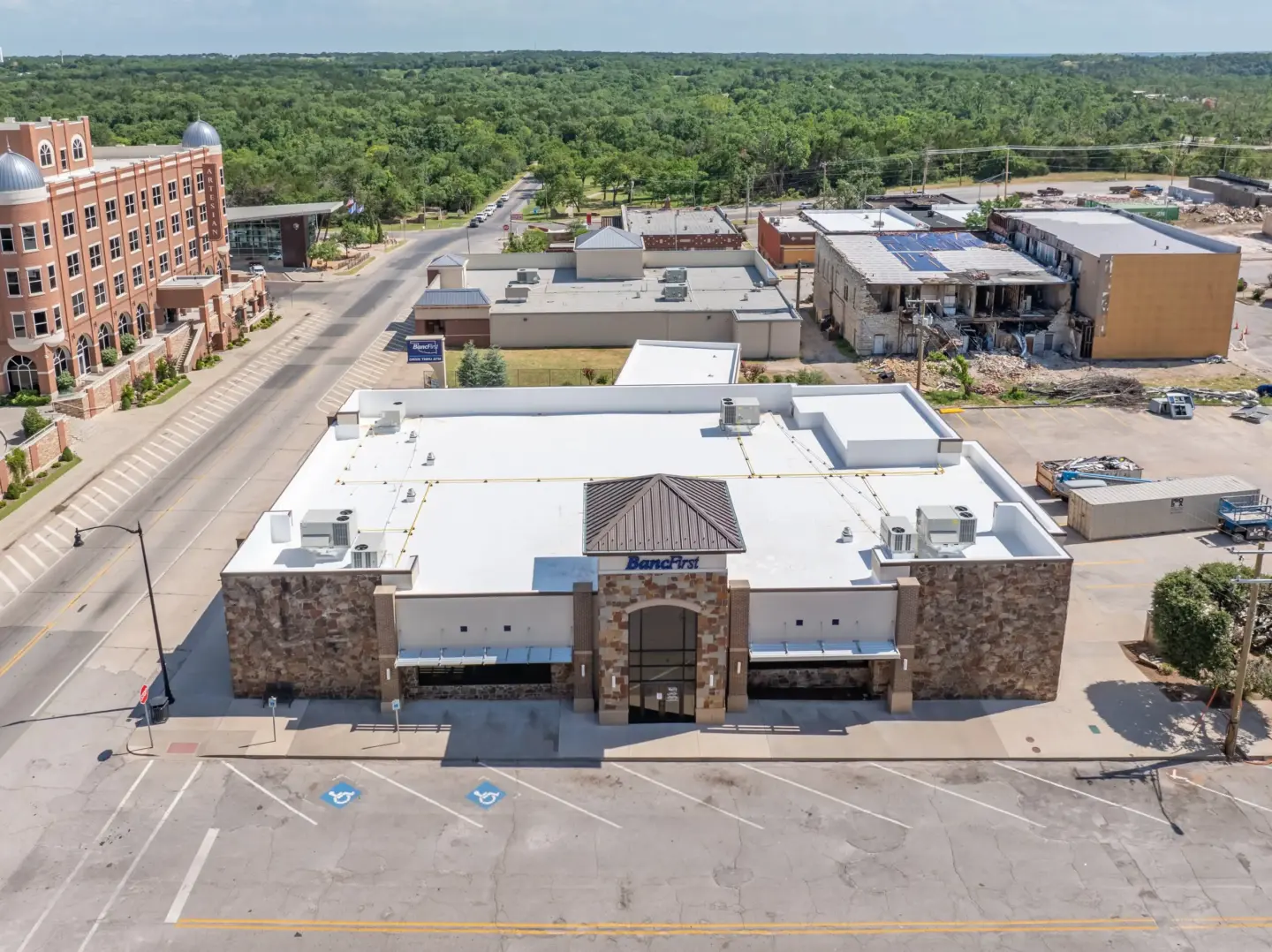
Key Takeaways
Flat roofs are efficient, cost-effective, and widely used across many types of facilities, but they require thoughtful material selection and ongoing maintenance to perform well over time. Understanding your roofing system and addressing small issues early can prevent major disruptions. At Next Phase Roofing, we deliver high-quality inspections, installations, repairs, and unmatched customer care. Whether you’re exploring a roof replacement or looking to extend the life of your current system, we provide a comprehensive, turn-key solution. Contact us today for a free inspection or call 405-500-7663.
Ready for your Next Phase?
Our commercial roofing experts turn insight into action. Schedule a consult and secure a storm-ready solution for your facility before the next front rolls through.